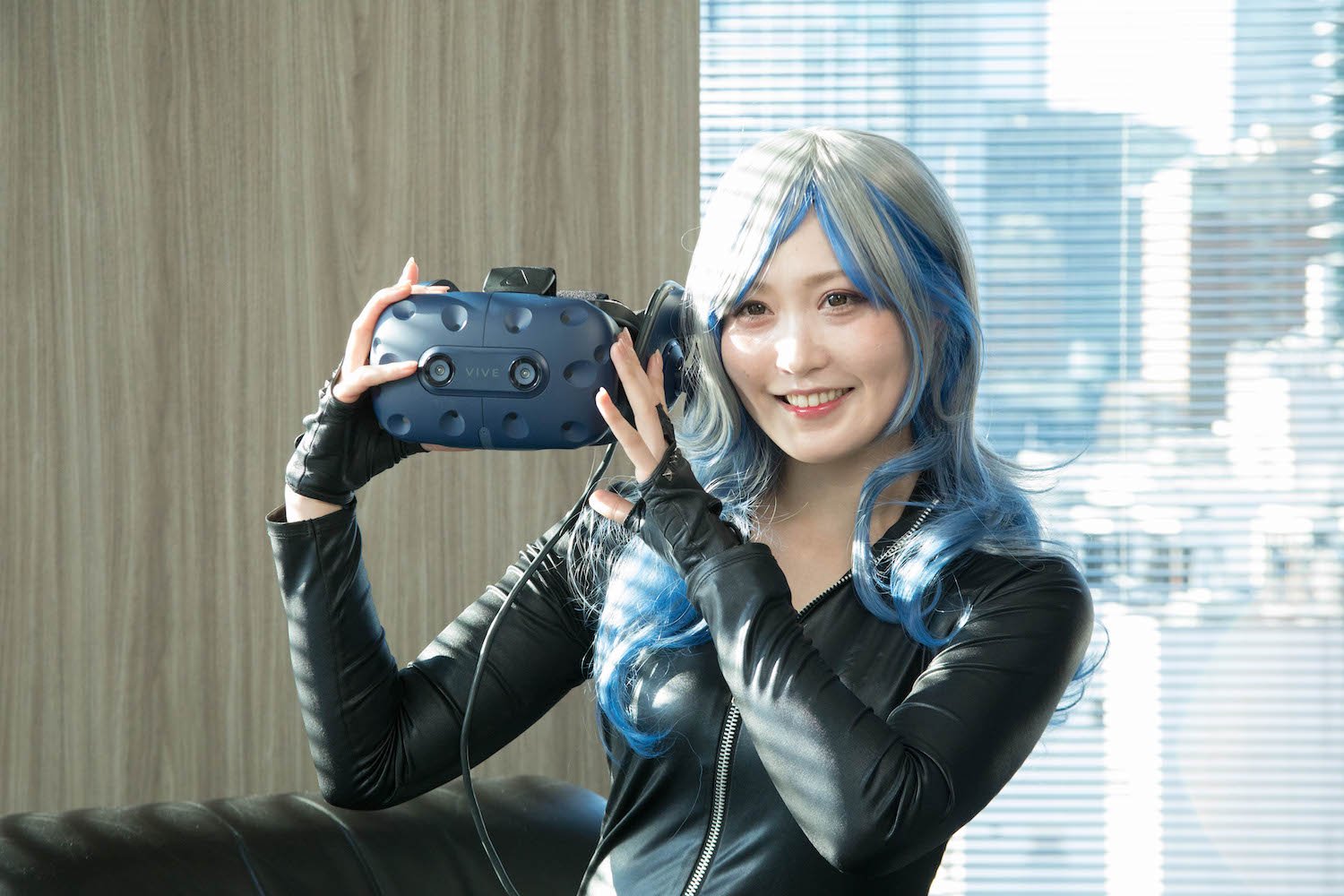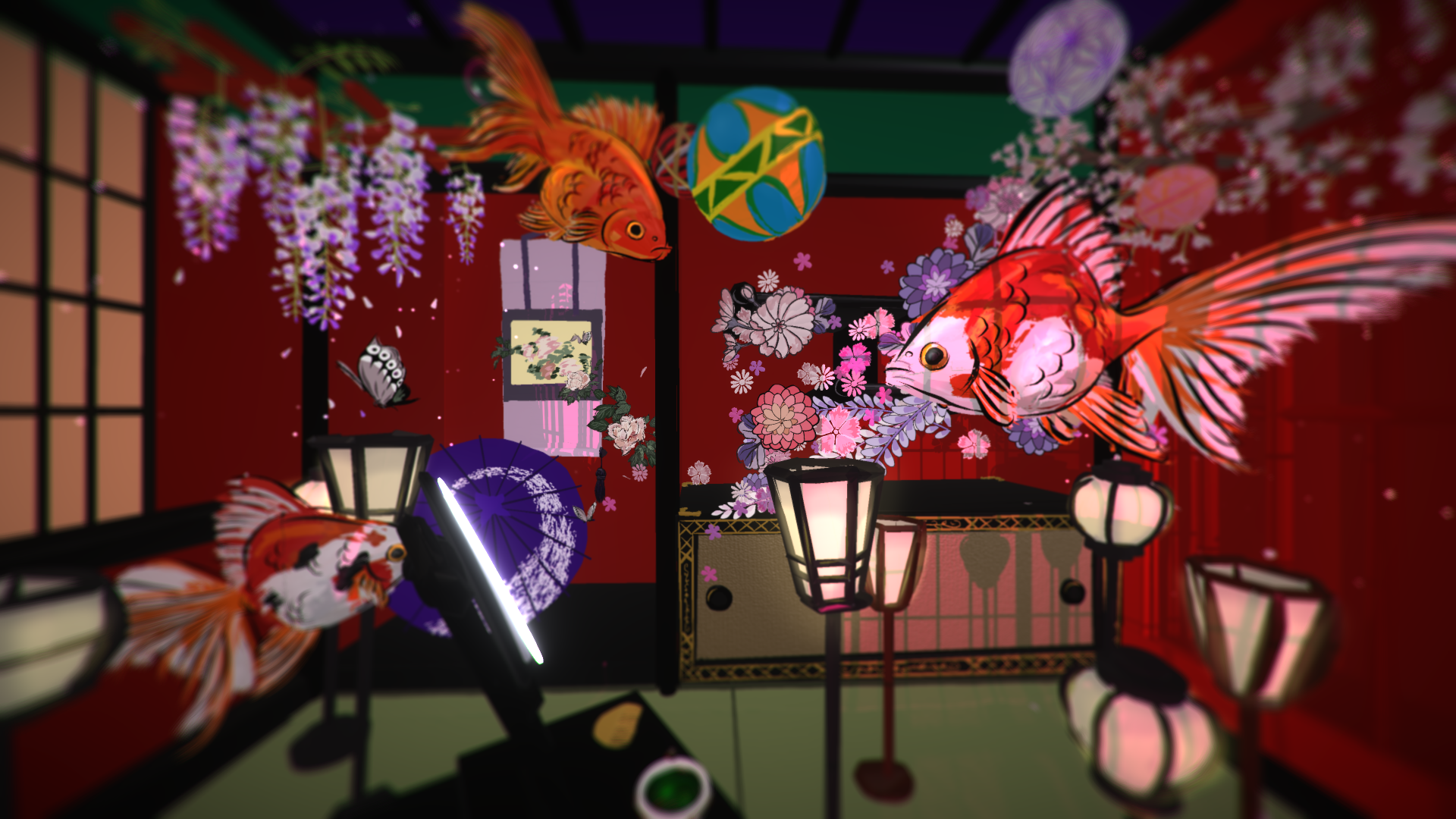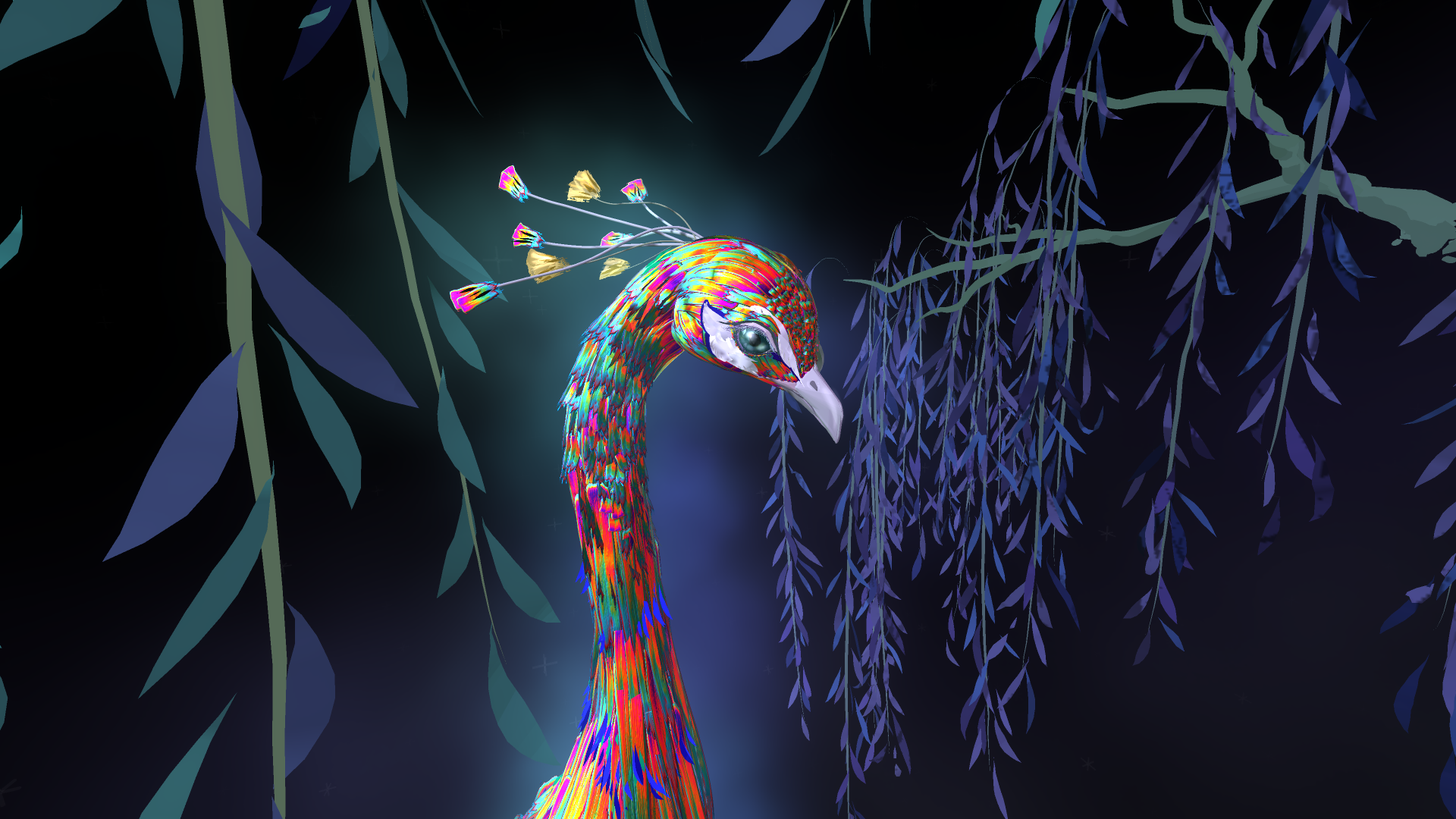©︎TOKI
©︎TOKI
Aimi Sekiguchi
Japan’s pioneer VR/NFT Artist, Aimi Sekiguchi is one of the forerunners of digital art in Japan. Using the Tilt Brush, in a matter of hours Sekiguchi creates a life wholly apart from reality. Drawing inspiration from deep within Japanese culture, Sekiguchi’s paintings are an eclectic world where ukiyo-e painting techniques and traditional Japanese motifs meet the vibrant and fantastical realm of modern technology and color.
Holding live VR art performances across the globe, Sekiguchi has held private, VR art exhibitions, performed at the WorldSkills2019 Closing Ceremony in Kazan, Russia, as well as countless other public and private events.
Starting her career long before the emergence of NFT (non-fungible token) art or the highly advanced VR equipment of the last few years, Sekiguchi has played a central role in growing VR art in Japan and the world to its current-day popularity. In 2017 when the industry was very much still an up-and-coming market, Sekiguchi held the world’s first private VR exhibition through the support of crowdfunding, raising more than three times her initial goal. With the growing buzz around the metaverse, alongside seemingly never-ending stay-at-home orders of a global pandemic, we have since found ourselves with the perfect cocktail for a rapid surge in the realm of digital art.
Sekiguchi sat down with us to reflect on her journey as a VR/NFT artist, as well as her perspectives on Japanese culture, traditional art, and the exploding growth of the digital art space.
Drawing Inspiration from Traditions
Sekiguchi laughs as she looks back on her first introduction to traditional Japanese art. “The first ukiyo-e I ever saw in-person was actually shunga”. (Shunga 春画 is a traditional Japanese erotic art typically executed as a kind of ukiyo-e, or Japanese woodblock print. Some of Japan’s most famous ukiyo-e artists, such as Kitagawa Utamaro and Katsushika Hokusai created works of shunga). “It sounds strange but it is not just eroticism, there is a level of delicacy and innovative artistry in the work that really resonated with me”.
©︎Aimi Sekiguchi
In the Edo period, shunga was technically a banned form of art, thus many artists would receive commissions under the table from wealthy patrons. Because of the fringe nature, it was also the space where many artists felt the most freedom to experiment with new techniques.
“There is a type of depth in ukiyo-e and traditional Japanese art that is still impossible to replicate with digital. I really respect traditional Japanese art because of this and I am always trying to learn from it…When drawing something from traditional Japanese culture, I always ask myself how can I express the soul of this object, because in Japan we say that everything has a soul. Sometimes I will add a bit of vegetation, or purposely leave things a bit messy and undone because I want to bring a sense of reality and life to the object”.
Sekiguchi practices maki-e (Japanese lacquer painting) and ikebana (Japanese flower arrangement) as hobbies, and believes that many teachings of Japanese culture can be directly applied to the digital art space.
©︎Aimi Sekiguchi
“Traditional Japanese culture has a unique respect for the importance of space. For example, flower arrangement exists in other parts of the world, but Japanese flower arrangement is unique in that the final art piece is not just the flowers, but the space around it as well”.
Sekiguchi explains how this concept of space is essential in virtual reality. “In VR art and in the metaverse, your canvas is not a 2D surface, so the perception of space and how it interacts with your artwork is very important. Your art exists in 3D, and the canvas is your full 360-degree perception. The Japanese perception of space is a skill that translates seamlessly into digital art”.
©︎Aimi Sekiguchi
Growing up in Japan, Sekiguchi has always felt a close connection to Japanese culture and traditional art, so it felt only natural for her to incorporate this into her work.
“In this day and age where so much value is derived from logic or profit, traditional art forms are different. They are valuable because they have the ability to move our souls. For something magical like this to disappear is a very sad moment in humanity. We need to protect these fading artforms. I hope I can be someone who does so.
Sekiguchi hopes to merge even more the concepts of tradition and innovation into her art. “In the future, I want to try working with mixed reality. Right now I use traditional Japanese culture as the topic of my art in VR, but I would like to try creating virtual art around a physical ikebana arrangement, playing even more into the medium of space and seeing what I can do there”.
©︎Aimi Sekiguchi
The Magic of VR
As Sekiguchi looks forward to new goals and projects, she also recounts the first time she experienced VR. “It was magic. I was like a child; amazed, delighted”. She explains that it was very important for her to enter this space with that childlike innocence.
“At the time the job ‘VR artist’ did not exist, but it was just genuinely something that excited me”.
Using a range of systems and hardware, VR stimulates the senses to create the illusion of reality. A medium unlike any other audio-visual platform, it immerses users inside an experience and grants them freedom from the bounds of the physical world. With new games, new hardware, and even new use cases, in the past few years, VR and digital art have gone from a niche market to one of the fastest-growing areas of artistic expression and technological innovation.
“I could see that this was a medium that crosses generational and cultural lines. It’s a medium that speaks to people’s souls and that’s why I was able to decide this path without any hesitation”.
WorldSkills2019 Closing Ceremony ©︎Aimi Sekiguchi
The Rise of the NFT
Her dedication paid off, and in March 2021, her first VR NFT (non-fungible token) was successfully sold in an auction.
“The first time I saw the selling price I was honestly stunned. Until very recently, digital art was not seen as something to be owned or sold. I knew the day would come when digital art would be valued like physical art, just because of how already deeply intertwined our physical lives are with our digital. However, I did not see that day coming so quickly.”
Following the rise of cryptocurrency, in 2017, NFTs took the art world by storm. By 2020, NFT trading was worth over $250 million, an increase of almost 300 percent from the previous year. For artists, digital art and NFTs have opened doors to new and exciting opportunities.
NFTs make it possible to assign value to digital art, a concept that was deemed impossible in the years before, because technology had made things endlessly and costlessly reproducible.
The selling prices for NFTs are often higher than the sums artists would receive if they tried to sell their digital artworks online or as prints. NFTs can also be designed to pay their creators a cryptocurrency fee every time they change hands, creating an ongoing royalty to support the artist. Because the intellectual property remains with the artist, fakes are easily tracked and managed. Understandably, for many digital creators, Sekiguchi included, it's an incredibly exciting and democratizing new way to create and live.
©︎Aimi Sekiguchi
©︎Aimi Sekiguchi
©︎Aimi Sekiguchi
A New Form of Omotenashi
Partly triggered by the pandemic-induced closures of museums, galleries, and exhibitions, digital art and NFT galleries now offer artists a way to showcase their works to millions of people across the globe through the metaverse.
“If I am ever bedridden, I would still continue my creative work through VR. If my arms don’t work, I can use motion trackers to draw. In the digital space, as long as I am alive, I am able to create art and connect with people. That's why I truly want to continue this profession until the day I die”.
Sekiguchi understands that VR is not anywhere near perfect yet, but imagines a close future where the technology can even be used to tackle one of Japan’s biggest concerns.
“A big challenge of VR is that right now, it is not yet universally accessible. It requires a certain level of digital literacy…The people who love it the most are actually the ones who you would think would be most opposed; the elderly. Because they have so many limitations to their body, they usually can't even go to places with uneven surfaces, but with VR, they can go anywhere. They can even go to space! Once we are able to clear these accessibility hurdles, I believe VR will be extremely beneficial for the aging population”.
One of the fundamental aspects of Japanese traditional culture is the concept of omotenashi (Japanese hospitality). Sekiguchi explains that for her, VR is the ultimate form of omotenashi.
“You transport the viewer to a new dimension, and enable them to see the world in a brand new way. It is a form of omotenashi that has never been experienced before. As an artist, my greatest joy in life is to create for other people. The possibilities of VR are endless, and I want people to feel the same electric magic I felt the day I first tried VR. This is my omotenashi”.
©︎Aimi Sekiguchi
@TOKI
RESERVE A VR EXPERIENCE
EXPLORE VIRTUAL REALITY WITH JAPAN’S LEADING VR ARTIST
Get lost in the mesmerizing world of Japanese art with leading Virtual Reality/ NFT artist, Aimi Sekiguchi. Experience a live painting performance and even learn how to create your own VR artwork
READ OTHER ARTISAN STORIES

















